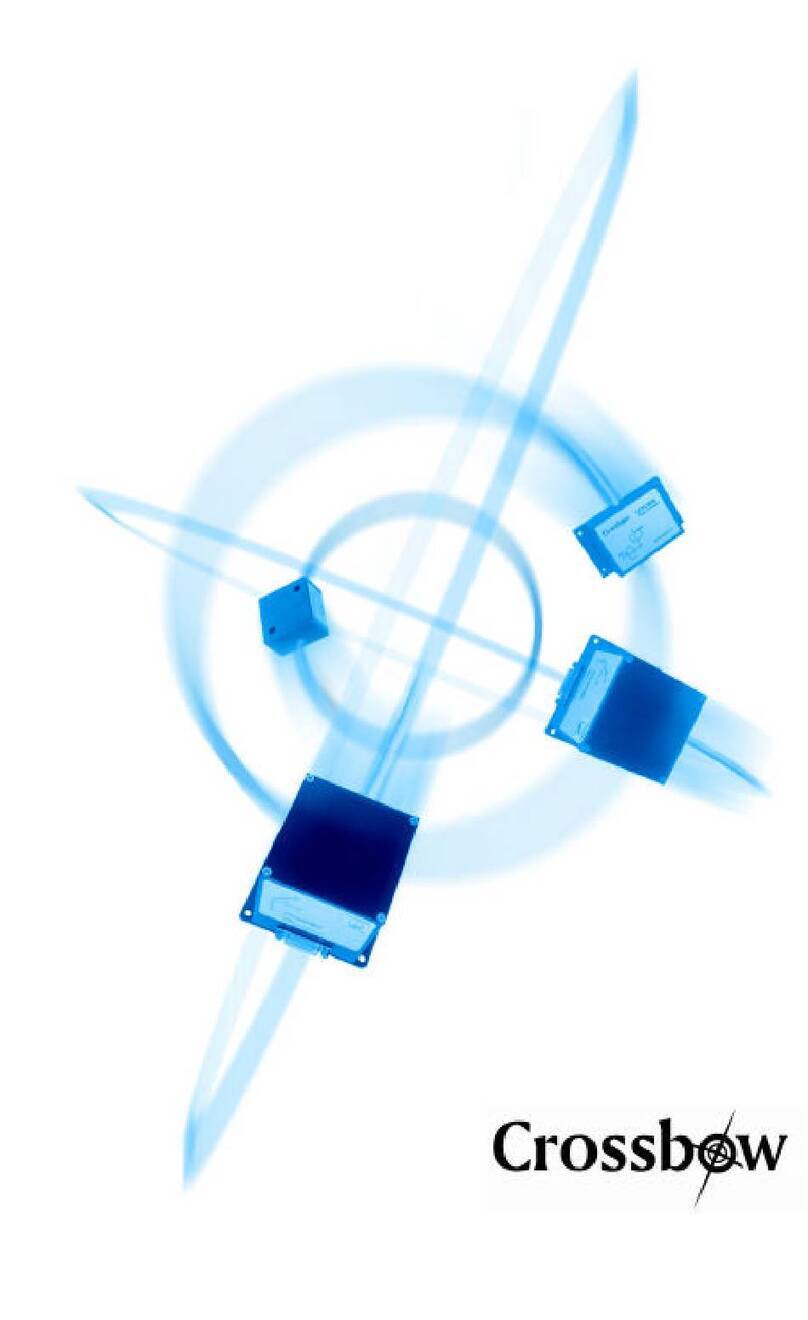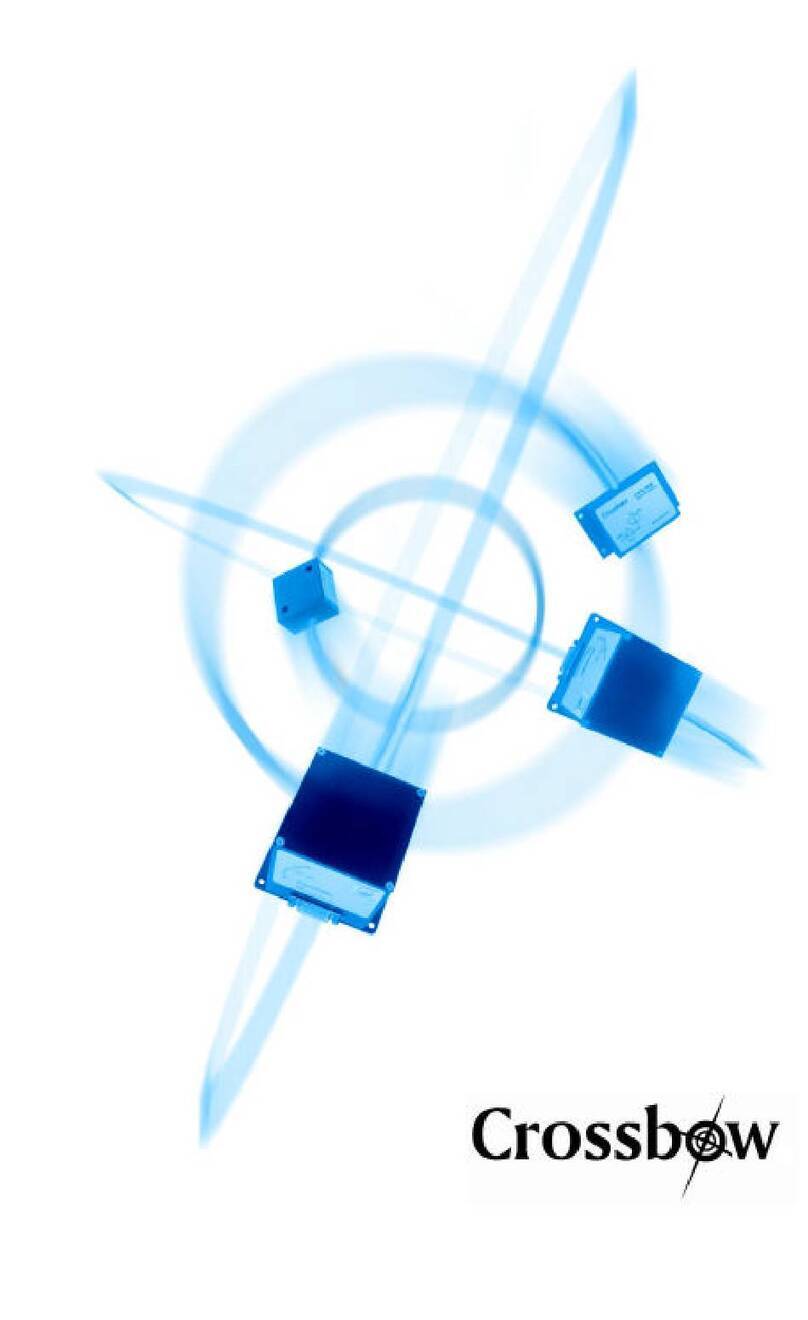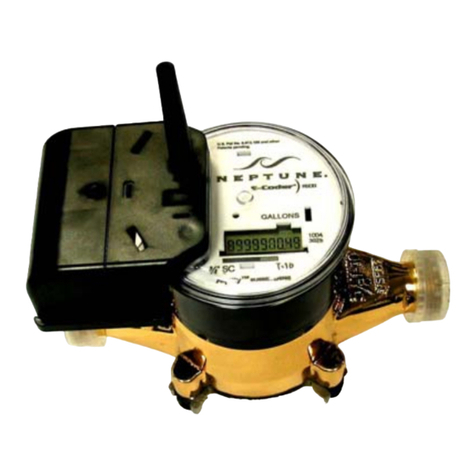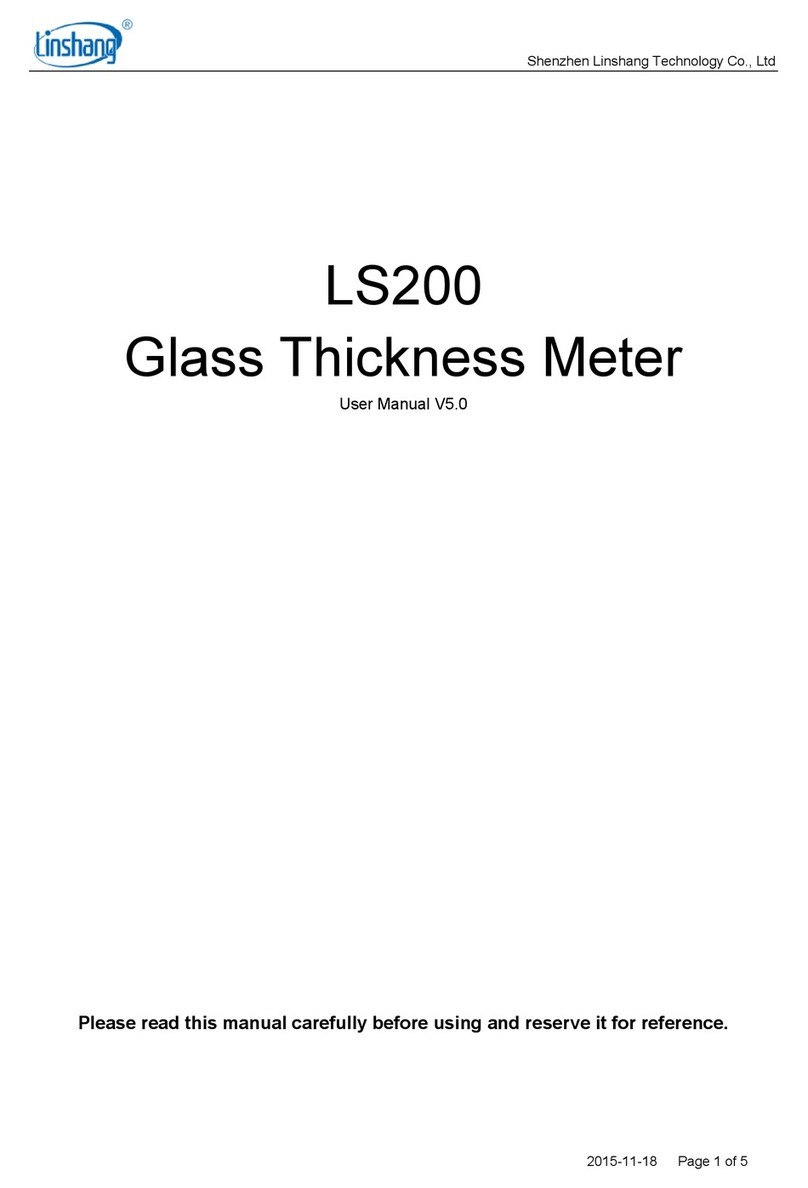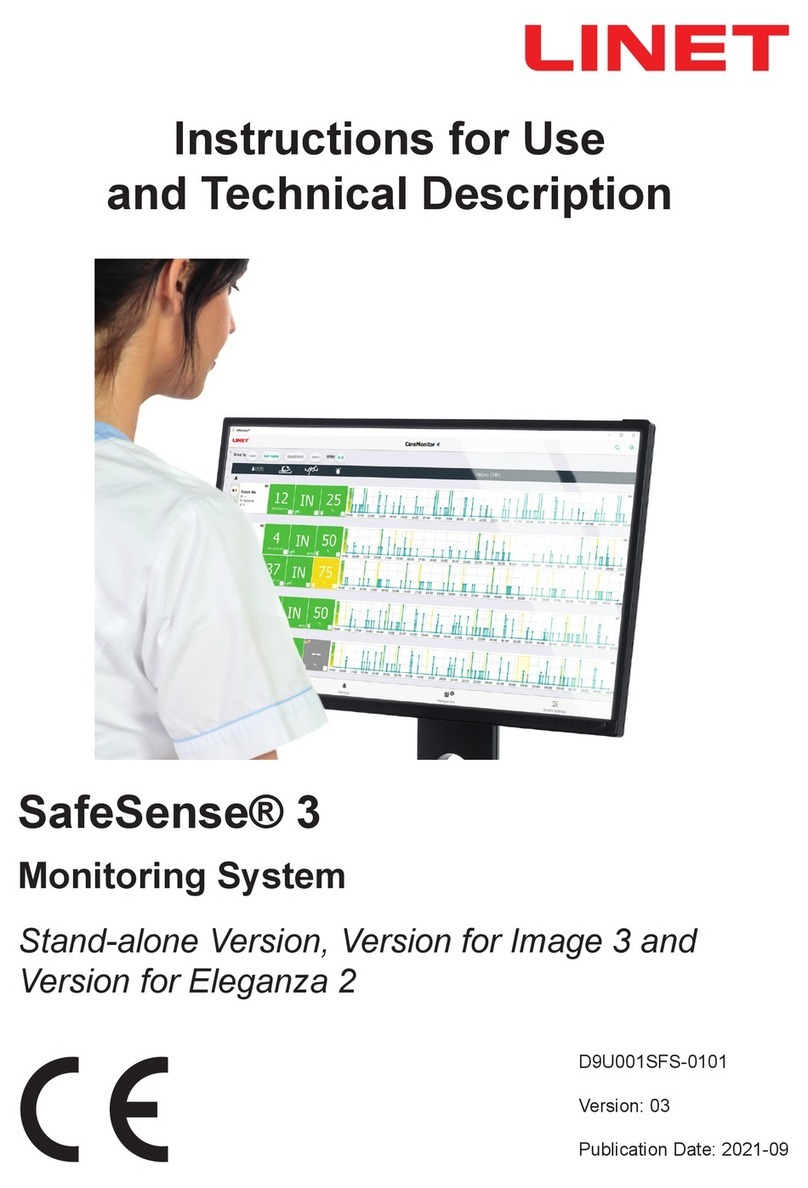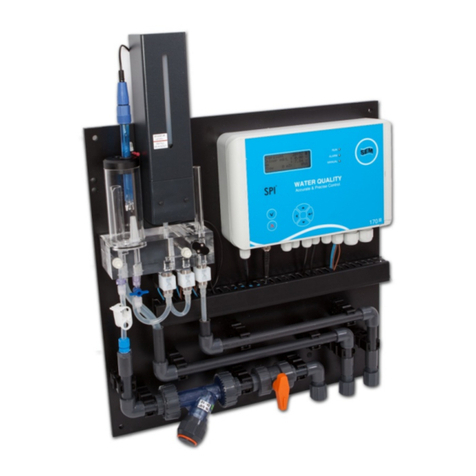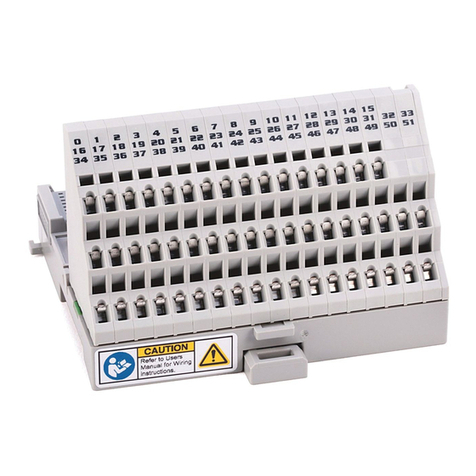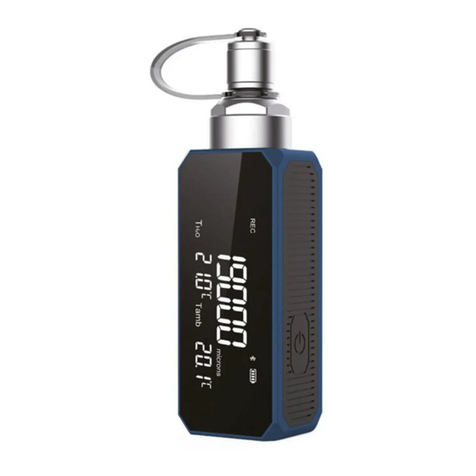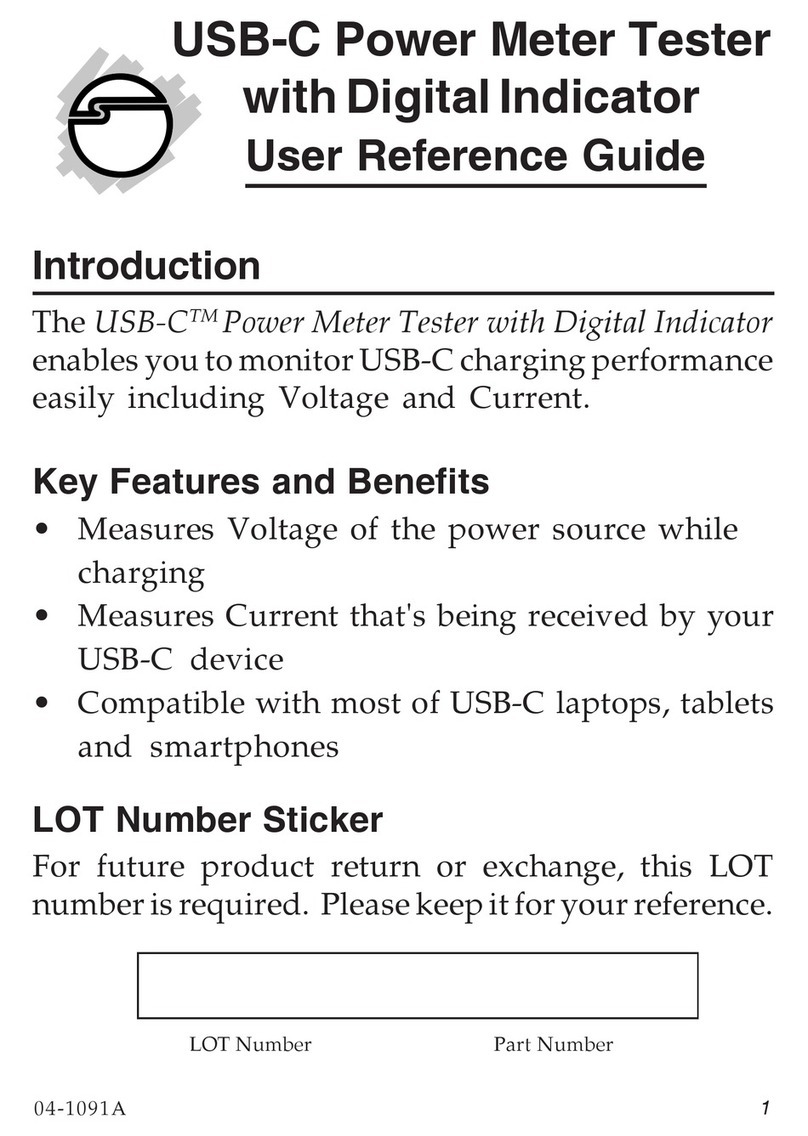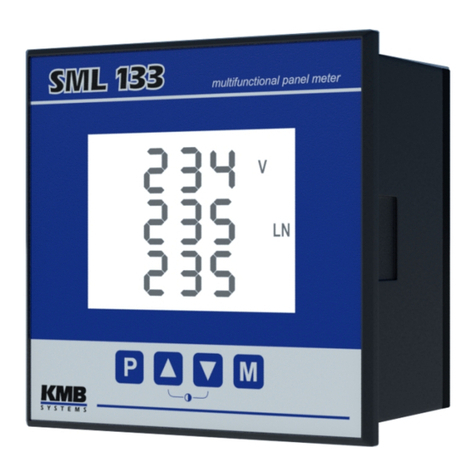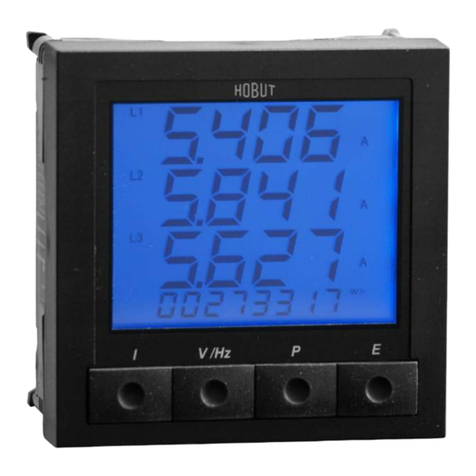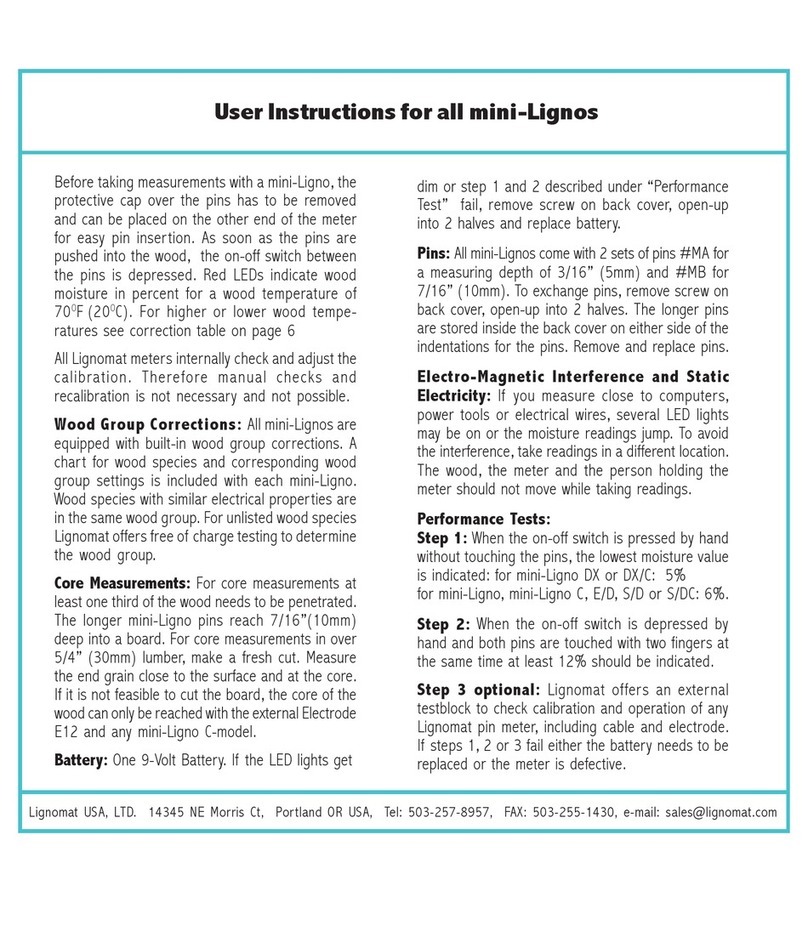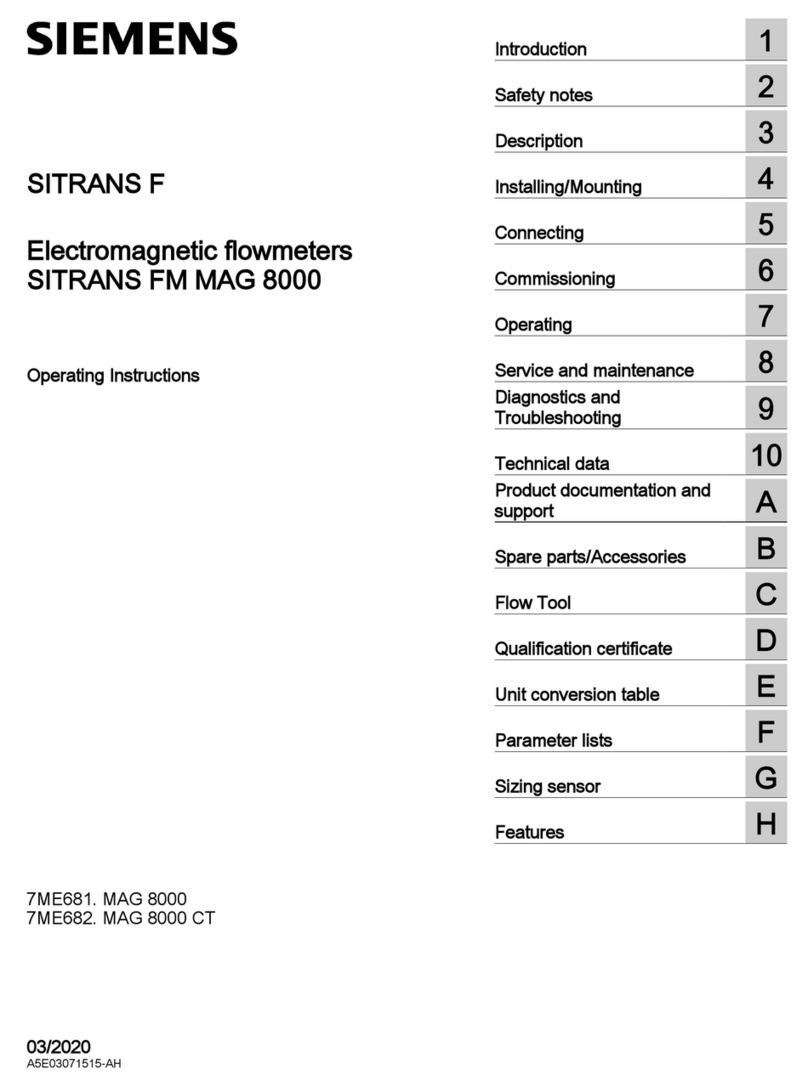Crossbow Technology AHRS300 Series User manual

AHRS300 Series User’s Manual
AHRS300CA-
(DMU-AHRS)
Revision 1.5, October 2001
Document 6001-0003
SUNSTAR传感与控制 http://www.sensor-ic.com/ TEL:0755-83376549 FAX:0755-83376182 E-MAIL:[email protected]m
SUNSTAR自动化 http://www.sensor-ic.com/ TEL: 0755-83376489 FAX:0755-83376182 E-MAIL:[email protected]

©2000 Crossbow Technology, Inc. All rights reserved. Information in this
document is subject to change without notice.
Crossbow and SoftSensor are registered trademarks and DMU is a
trademark of Crossbow Technology, Inc. Other product and trade names
are trademarks or registered trademarks of their respective holders.
SUNSTAR传感与控制 http://www.sensor-ic.com/ TEL:0755-83376549 FAX:0755-83376182 E-MAIL:[email protected]m
SUNSTAR自动化 http://www.sensor-ic.com/ TEL: 0755-83376489 FAX:0755-83376182 E-MAIL:[email protected]

AHRS300Series User’s Manual
Doc.6001-0003 Rev.1.5 Page i
Table of Contents
1Introduction......................................................................................................1
1.1 The AHRS Series Motion and Attitude Sensing Units....................1
1.2 Package Contents ...................................................................................2
2Quick Start .......................................................................................................3
2.1 GyroView Software ...............................................................................3
2.1.1 GyroView Computer Requirements...........................................3
2.1.2 Install GyroView...........................................................................3
2.2 Connections.............................................................................................3
2.3 Setup GyroView.....................................................................................4
2.4 Take Measurements...............................................................................4
3AHRS300CA Details .....................................................................................6
3.1 AHRS300CA Coordinate System.......................................................6
3.2 Connections.............................................................................................6
3.3 Interface...................................................................................................8
3.4 Measurement Modes..............................................................................9
3.4.1 Voltage Mode................................................................................9
3.4.2 Scaled Sensor Mode...................................................................10
3.4.3 Angle Mode..................................................................................11
3.5 Commands.............................................................................................12
3.5.1 Command List.............................................................................12
3.6 Data Packet Format..............................................................................15
3.7 Timing....................................................................................................18
3.8 Temperature Sensor.............................................................................18
3.9 Analog Output......................................................................................19
3.10 Magnetic Heading................................................................................20
4AHRS300CA Operating Tips.....................................................................21
4.1 The “Zero” Command.........................................................................21
4.2 The Erection Rate.................................................................................22
4.3 Mounting the AHRS300CA ...............................................................23
4.4 AHRS300CA Start Up Procedure .....................................................24
4.5 Advanced Strategies for Adjusting the Erection Rate ...................24
4.6 Adapted Flight Profile T-Setting.......................................................26
5Appendix A. Mechanical Specifications...................................................28
SUNSTAR传感与控制 http://www.sensor-ic.com/ TEL:0755-83376549 FAX:0755-83376182 E-MAIL:[email protected]m
SUNSTAR自动化 http://www.sensor-ic.com/ TEL: 0755-83376489 FAX:0755-83376182 E-MAIL:[email protected]

AHRS300 Series User’s Manual
Page ii Doc.6001-0003 Rev.1.5
6Appendix B. AHRS300CA Output Quick Reference.............................29
6.1 Analog Output Conversion.................................................................29
6.2 Digital Output Conversion..................................................................29
7Appendix C. Hard and Soft Iron Calibration...........................................30
7.1 Description............................................................................................30
7.2 Command List......................................................................................31
8Appendix D. AHRS300CA Command Quick Reference......................32
9Appendix E. Warranty and Support Information....................................33
9.1 Customer Service .................................................................................33
9.2 Contact Directory.................................................................................33
9.3 Return Procedure..................................................................................33
9.3.1 Authorization...............................................................................33
9.3.2 Identification and Protection.....................................................34
9.3.3 Sealing the Container.................................................................34
9.3.4 Marking.........................................................................................34
9.3.5 Return Shipping Address...........................................................34
9.4 Warranty................................................................................................34
SUNSTAR传感与控制 http://www.sensor-ic.com/ TEL:0755-83376549 FAX:0755-83376182 E-MAIL:[email protected]m
SUNSTAR自动化 http://www.sensor-ic.com/ TEL: 0755-83376489 FAX:0755-83376182 E-MAIL:[email protected]

AHRS300Series User’s Manual
Doc.6001-0003 Rev.1.5 Page iii
About this Manual
The following annotations have been used to provide additional
information.
XNOTE
Note provides additional information about the topic.
þEXAMPLE
Examples are given throughout the manual to help the reader understand the
terminology.
PIMPORTANT
This symbol defines items that have significant meaning to the user
MWARNING
The user should pay particular attention to this symbol. It means there is a
chance that physical harm could happen to either the person or the
equipment.
The following paragraph heading formatting is used in this manual:
1 Heading 1
1.1 Heading 2
1.1.1 Heading 3
Normal
SUNSTAR传感与控制 http://www.sensor-ic.com/ TEL:0755-83376549 FAX:0755-83376182 E-MAIL:[email protected]m
SUNSTAR自动化 http://www.sensor-ic.com/ TEL: 0755-83376489 FAX:0755-83376182 E-MAIL:[email protected]

SUNSTAR传感与控制 http://www.sensor-ic.com/ TEL:0755-83376549 FAX:0755-83376182 E-MAIL:[email protected]m
SUNSTAR自动化 http://www.sensor-ic.com/ TEL: 0755-83376489 FAX:0755-83376182 E-MAIL:[email protected]

AHRS300 Series User’s Manual
Doc.6001-0003 Rev.1.5 Page 1
1Introduction
1.1 The AHRS Series Motion and Attitude Sensing Units
This manual explains the use of the AHRS300CA, a nine-axis measurement
system designed to measure stabilized pitch, roll and yaw angles in a
dynamic environment.
The AHRS300CA is a nine-axis measurement system that combines linear
accelerometers, rotational rate sensors, and magnetometers. The AHRS
uses the 3-axis accelerometer and 3-axis rate sensorto make a complete
measurement of the dynamics of your system. The addition of a 3-axis
magnetometer also allows the AHRS to make a true measurement of
magnetic heading.
The AHRS300CA is the solid-state equivalent of a vertical gyro/artificial
horizon display combined with a directional gyro.
The DMU series units are low power, fast turn on, reliable and accurate
solutions for a wide variety of stabilization and measurement applications.
All DMU products have both an analog output and an RS-232 serial link.
Data may be requested via the serial link as a single polled measurement or
may be streamed continuously. The analog outputs are fully conditioned
and may be connected directly to an analog data acquisition device.
Crossbow Technology DMUs employ onboard digital processing to
compensate for deterministic error sources within the unit and to compute
attitude information. The DMUs accomplish these tasks with an analog to
digital converter and a high performance Digital Signal Processor.
The AHRS300CA uses angular rate sensors and linear acceleration sensors
that are micro-machined devices. The three angular rate sensors consist of
vibrating ceramic plates that utilize the Coriolis force to output angular rate
independently of acceleration. The three MEMS accelerometers are surface
micro-machined silicon devices that use differential capacitance to sense
acceleration. Solid-state MEMS sensors make the AHRS both responsive
and reliable. The magnetic sensors are state-of-the-art miniature fluxgate
sensors. Fluxgate sensors make the AHRS sensitive and responsive, with
better temperature performance than other technologies such as magneto-
resistive sensors.
The AHRS300CA should not be exposed to large magnetic fields. This
could permanently magnetize internal components of the AHRS and
degrade its magnetic heading accuracy.
SUNSTAR传感与控制 http://www.sensor-ic.com/ TEL:0755-83376549 FAX:0755-83376182 E-MAIL:[email protected]m
SUNSTAR自动化 http://www.sensor-ic.com/ TEL: 0755-83376489 FAX:0755-83376182 E-MAIL:[email protected]

AHRS300 Series User’s Manual
Page 2Doc.6001-0003 Rev.1.5
1.2 Package Contents
In addition to your DMU sensor product you should have:
•1 CD with GyroView Software
GyroView will allow you to immediately view the outputs of the
DMU on a PC running Microsoft® Windows95™ or
WindowsNT™. You can also download this software from
Crossbow’s web site at http://www.xbow.com.
•1 Digital Signal Cable.
This links the DMU directly to a serial port. Only the transmit,
receive, power, and ground channels are used. The analog outputs
are not connected.
•1 DMU Calibration Sheet
The Digital Calibration Sheets contains the custom offset and
sensitivity information for your DMU. The calibration sheet is not
needed for normal operation as the DMU has an internal EEPROM
to store its calibration data. However, this information is useful
when developing your own software to correctly scale the output
data. Save this page!
•1 DMU Data Sheet
This contains valuable digital interface information including data
packet formats and conversion factors.
SUNSTAR传感与控制 http://www.sensor-ic.com/ TEL:0755-83376549 FAX:0755-83376182 E-MAIL:[email protected]m
SUNSTAR自动化 http://www.sensor-ic.com/ TEL: 0755-83376489 FAX:0755-83376182 E-MAIL:[email protected]

AHRS300 Series User’s Manual
Doc.6001-0003 Rev.1.5 Page 3
2Quick Start
2.1 GyroView Software
Crossbow includes GyroView software to allow you to use the DMU right
out of the box and the evaluation is straightforward. Install the GyroView
software, connect the DMU to your serial port, applypower to your unit and
start taking measurements.
2.1.1 GyroView Computer Requirements
The following are minimum capabilities that your computer should have to
run GyroView successfully:
•CPU: Pentium-class
•RAM Memory: 32MB minimum, 64MB recommended
•Hard Drive Free Memory: 15MB
•Operating System: Windows 95, 98, NT4, 2000
2.1.2 Install GyroView
To install GyroView in your computer:
1. Insert the CD “Support Tools” in the CD-ROM drive.
2. Find the GyroView folder. Double click on the setup file.
3. Follow the setup wizard instructions. You will install GyroView
and a LabView 6 Runtime Engine. You will need both these
applications.
If you have any problems or questions, you may contact Crossbow directly.
2.2 Connections
The DMU is shipped with a cable to connect the DMU to a PC
communications port.
1. Connect the 15-pin end of the digital signal cable to the port on the
DMU.
2. Connect the 9-pin end of the cable to the serial port of your
computer.
3. Connect the additional black and red wires on the cable supply
power to the DMU. Match red to (+) power and black to (-)
ground. The input voltage can range from 8 -30 VDC at 275 mA
for the AHRS300CA. For further information, see the
specifications for your unit.
SUNSTAR传感与控制 http://www.sensor-ic.com/ TEL:0755-83376549 FAX:0755-83376182 E-MAIL:[email protected]m
SUNSTAR自动化 http://www.sensor-ic.com/ TEL: 0755-83376489 FAX:0755-83376182 E-MAIL:[email protected]

AHRS300 Series User’s Manual
Page 4Doc.6001-0003 Rev.1.5
MWARNING
Do not reverse the power leads! Applying the wrong power to the DMU
can damage the unit; Crossbow Technology is not responsible for resulting
damage to the unit.
XNOTE
The analog outputs from the DMU are unconnected in this cable.
2.3 Setup GyroView
With the DMU connected to your PC serial port and powered, open the
GyroView software.
1. GyroView should automatically detect the DMU and display the
serial number and firmware version if it is connected.
2. If GyroView does not connect, check that you have the correct
COM port selected. You find this under the “DMU” menu.
3. Select the type of display you want under the menu item
“Windows”. Graph displays a real time graph of all the DMU
data; FFT displays a fast-fourier transform of the data; Navigation
shows an artificial horizon display.
4. You can log data to a file by entering a data file name. You can
select the rate at which data is saved to disk.
5. If the status indicator says, “Connected”, you’re ready to go. If
the status indicator doesn’t say connected, check the connections
between the DMU and the computer; check the power; checkthe
serial COM port assignment on your computer.
2.4 Take Measurements
Once you have configured GyroView to work with your DMU, pick what
kind of measurement you wish to see. “Graph” will show you the output
you choose as a strip-chart type graph of value vs. time. “FFT” will show
you a real-time fast Fourier transform of the output you choose.
“Navigation” will show an artificial horizon and the stabilized pitch and roll
output of the DMU.
Let the DMU warm up for 30 seconds when you first turn it on. You should
zero the rate sensors when you first use the DMU. Set the DMU down in a
stable place. On the main control panel, enter a value into the “zero ave
time” box. “50” will work well. Click the “Z” button. This measures the
rate sensor bias and sets the rate sensor outputs to zero. The average time
SUNSTAR传感与控制 http://www.sensor-ic.com/ TEL:0755-83376549 FAX:0755-83376182 E-MAIL:[email protected]m
SUNSTAR自动化 http://www.sensor-ic.com/ TEL: 0755-83376489 FAX:0755-83376182 E-MAIL:[email protected]

AHRS300 Series User’s Manual
Doc.6001-0003 Rev.1.5 Page 5
determines the number of samples for averaging. 1 unit equals 10 samples
at the ADC sampling rate. For normal applications, your average time
should be at least 20. The “zero” command is discussed more in “The
‘Zero’ Command” section. Now you’re ready to use the DMU!
SUNSTAR传感与控制 http://www.sensor-ic.com/ TEL:0755-83376549 FAX:0755-83376182 E-MAIL:[email protected]m
SUNSTAR自动化 http://www.sensor-ic.com/ TEL: 0755-83376489 FAX:0755-83376182 E-MAIL:[email protected]

AHRS300 Series User’s Manual
Page 6Doc.6001-0003 Rev.1.5
3AHRS300CA Details
3.1 AHRS300CA Coordinate System
The AHRS300CA will have a sticker on one face illustrating the DMU
coordinate system. With the connector facing you, and the mounting plate
down, the axes are defined as:
X-axis –from face with connector through the DMU
Y-axis –along the face with connector from left to right
Z-axis –along the face with the connector from top to bottom
The axes form an orthogonal right-handed coordinate system. An
acceleration is positive when it is oriented towards the positive side of the
coordinate axis. For example, with the DMU sitting on a level table, it will
measure zero g along the x-and y-axes and +1 g along the z-axis.
Gravitational acceleration is directed downward, and this is defined as
positive for the DMU z-axis.
The angular rate sensors are aligned with these same axes. The rate sensors
measure angular rotation rate around a given axis. The rate measurements
are labeled by the appropriate axis. The direction of a positive rotation is
defined by the right-hand rule. With the thumb of your right hand pointing
along the axis in a positive direction, your fingers curl around in the
positive rotation direction. For example, if the DMU is sitting on a level
surface and you rotate it clockwise on that surface, this will be a positive
rotation around the z-axis. The x-and y-axis rate sensors would measure
zero angular rates, and the z-axis sensor would measure a positive angular
rate.
The magnetic sensors are aligned with the same axes definitions and sign as
the linear accelerometers.
Pitch is defined positive for a positive rotation around the y-axis (pitch up).
Roll is defined as positive for a positive rotation around the x-axis (roll
right). Yaw is defined as positive for a positive rotation around the z-axis
(turn right).
The angles are defined as standard Euler angles using a 3-2-1 system. To
rotate from the body frame to an earth-level frame, roll first, then pitch, and
then yaw.
3.2 Connections
The DMU has a female DB-15 connector. The signals are as shown in
Table 1.
SUNSTAR传感与控制 http://www.sensor-ic.com/ TEL:0755-83376549 FAX:0755-83376182 E-MAIL:[email protected]m
SUNSTAR自动化 http://www.sensor-ic.com/ TEL: 0755-83376489 FAX:0755-83376182 E-MAIL:[email protected]

AHRS300 Series User’s Manual
Doc.6001-0003 Rev.1.5 Page 7
8
9101112131415
1234567
Table 1. AHRS300CA Connector Pin Out
Pin Signal
1RS-232 Transmit Data
2RS-232 Receive Data
3Positive Power Input (+Vcc)
4Ground
5X-axis accelerometer Analog voltage1
6Y-axis accelerometer Analog voltage1
7Z-axis accelerometer Analog voltage1
8Roll rate analog voltage2
9Pitch rate analog voltage2
10 Yaw rate analog voltage2
11 Timing Pulse
12 Roll angle/X-axis magnetometer scaled analog voltage3
13 Pitch angle/Y-axis magnetometer scaled analog voltage3
14 Yaw angle/Z-axis magnetometer scaled analog voltage3
15 Unused
Notes:
1. The accelerometer analog voltage outputs are the raw sensor output.
These outputs are taken from the output of the accelerometers.
2. The rate sensor analog voltage outputs are scaled to represent°/s. These
outputs are created by a D/A converter.
3. Actual output depends on DMU measurement mode. These outputs are
created by a D/A converter.
All analog outputs are fully buffered and are designed to interface directly
to data acquisition equipment.
SUNSTAR传感与控制 http://www.sensor-ic.com/ TEL:0755-83376549 FAX:0755-83376182 E-MAIL:[email protected]m
SUNSTAR自动化 http://www.sensor-ic.com/ TEL: 0755-83376489 FAX:0755-83376182 E-MAIL:[email protected]

AHRS300 Series User’s Manual
Page 8Doc.6001-0003 Rev.1.5
The serial interface connection is standard RS-232. On a standard DB-25
COM port connector, make the connections per Table 2.
Table 2. DB-25 COM Port Connections
COM Port Connector DMU Connector
Pin # Signal Pin # Signal
2TxD 2RxD
3RxD 1TxD
7GND* 4GND*
*Note: Pin 4 on the DMU is data ground as well as power ground.
On a standard DB-9 COM port connector, make the connections per Table
3.
Table 3. DB-9 COM Port Connections
COM Port Connector DMU Connector
Pin # Signal Pin # Signal
2RxD 1TxD
3TxD 2RxD
5GND* 4GND*
*Note: Pin 4 on the DMU is data ground as well as power ground.
Power is applied to the DMU on pins 3 and 4. Pin 4 is ground; Pin 3 should
have 8-30 VDC unregulated at 275 mA. If you are using the cable supplied
with the DMU, the power supply wires are broken out of the cable at the
DB-9 connector. The red wire is connected to VCC; the black wire is
connected to the power supply ground. DO NOT REVERSE THE POWER
LEADS.
The analog outputs are unconnected in the cable Crossbow supplies. The
analog outputs are fully buffered and conditioned and can be connected
directly into an A/D. The analog outputs require a data acquisition device
with an input impedance of 10kΩor greater.
3.3 Interface
The serial interface is standard RS-232, 38400 baud, 8 data bits, 1 start bit,
1 stop bit, no parity, and no flow control.
Crossbow will supply DMU communication software examples written in
LabView. Source code for the DMU serial interface can be obtained via the
SUNSTAR传感与控制 http://www.sensor-ic.com/ TEL:0755-83376549 FAX:0755-83376182 E-MAIL:[email protected]m
SUNSTAR自动化 http://www.sensor-ic.com/ TEL: 0755-83376489 FAX:0755-83376182 E-MAIL:[email protected]

AHRS300 Series User’s Manual
Doc.6001-0003 Rev.1.5 Page 9
web at http://www.xbow.com. The source code has a .vi file format and
requires a National Instruments LabView 5.0 or newer license to use.
The DMU baud rate can be changed per the following procedure:
1. Start with the DMU connected to the serial interface, with
your software set to the default baud rate of 38400.
2. Send the ASCII character “b” (0x62 hex) to the DMU. In a
terminal program like Windows HyperTerminal or ProComm,
this means simply type the letter “b”. The DMU is case
sensitive. The DMU will respond “B” (0x42 hex).
3. Now change the baud rate of your terminal software.
4. Send the ASCII character “a” (61 hex). The DMU will detect
the character and automatically match the baud rate your
software is using. Upon successful operation, the DMU will
return the character “A” (0x41 hex) at the new baud rate.
5. You can now use the DMU at the new baud rate.
The new baud rate setting is not permanent; therefore, this process must be
repeated after any power reset.
3.4 Measurement Modes
The AHRS300CA is designed to operate as a complete attitude and heading
reference system. You can also use the DMU as a nine-axis sensor module.
The AHRS can be set to operate in one of three modes: voltage mode,
scaled sensor mode, or angle (VG) mode. The measurement mode selects
the information that is sent in the data packet over the RS-232 interface.
See the “Data Packet Format” section for the actual structure of the data
packet in each mode.
3.4.1 Voltage Mode
In voltage mode, the analog sensors are sampled and converted to digital
data with 1 mV resolution. The digital data represents the direct voltage
output of the sensors. The data is 12-bit, unsigned. The value for each
sensor is sent as 2 bytes in the data packet over the serial interface. A single
data packet can be requested using a serial poll command or the DMU can
be set to continuously output data packets to the host.
The voltage data is scaled as:
voltage = data*(5 V)/212
where voltage is the voltage measured at the sensor, anddata is the value
of the unsigned 16-bit integer in the data packet. Note that although the
data is sent as 16-bit integers, the data has a resolution of only 12 bits.
SUNSTAR传感与控制 http://www.sensor-ic.com/ TEL:0755-83376549 FAX:0755-83376182 E-MAIL:[email protected]m
SUNSTAR自动化 http://www.sensor-ic.com/ TEL: 0755-83376489 FAX:0755-83376182 E-MAIL:[email protected]

AHRS300 Series User’s Manual
Page 10 Doc.6001-0003 Rev.1.5
The DMU rate sensor, magnetometer, and angle analog outputs are not
enabled in this mode. Only the linear accelerometer analog outputs on pins
5 -7 are enabled because these signals are taken directly from the
accelerometers. See the “Analog Output” section for a complete description
of the analog outputs.
3.4.2 Scaled Sensor Mode
In scaled sensor mode, the analog sensors are sampled, converted to digital
data, temperature compensated, corrected for misalignment, and scaled to
engineering units. The digital data represents the actual value of the
quantities measured. A calibration table for each sensor is stored in the
DMU non-volatile memory. A single data packet can be requested using a
serial poll command or the DMU can be set to continuously output data
packets to the host. The data is sent as signed 16-bit 2’s complement
integers. In this mode, the AHRS300CA operates as a nine-axis
measurement system.
The scaled sensor analog outputs are enabled in this mode. Note that
stabilized pitch, roll, and yaw angles are not available in scaled sensor
mode. See the “Analog Output” section for a complete description of the
analog outputs.
To convert the acceleration data into G’s, use the following conversion:
accel = data*(GR * 1.5)/215
where accel is the actual measured acceleration in G’s, data is the digital
data sent by the DMU, andGR is the G Range for your DMU. (The data is
scaled so that 1 G = 9.80 m s-2.) The G range of your DMU is the range of
accelerations your DMU will measure. For example, if your DMU uses a ±
2 G accelerometer, then the G range is 2.
To convert the angular rate data intodegrees per second, use the following
conversion:
rate = data*(AR*1.5)/215
where rate is the actual measured angular rate in°/sec, data is the digital
data sent by the DMU, andAR is the Angular rate Range of the DMU. The
angular rate range of your DMU is the range of angular rates your DMU
will measure. For example, if your DMU uses ± 150 °/s rate sensors, then
the AR range is 150.
To convert the acceleration data into Gauss, use the following conversion:
mag = data*(MR*1.5)/215
where mag is the actualmeasured magnetic field in Gauss, data is the
digital data sent by the DMU, andMR is the Magnetic field Range of the
DMU. MR is 1.25 for the AHRS300CA.
SUNSTAR传感与控制 http://www.sensor-ic.com/ TEL:0755-83376549 FAX:0755-83376182 E-MAIL:[email protected]m
SUNSTAR自动化 http://www.sensor-ic.com/ TEL: 0755-83376489 FAX:0755-83376182 E-MAIL:[email protected]

AHRS300 Series User’s Manual
Doc.6001-0003 Rev.1.5 Page 11
3.4.3 Angle Mode
In angle mode, the AHRS300CA acts as a complete attitude and heading
reference system andoutputs the stabilized pitch, roll, and yaw angles along
with the angular rate, acceleration, and magnetic field information. The
angular rate, acceleration, and magnetic field values are calculated as
described in the scaled sensor mode.
The DMU analog outputs are enabled in this mode, including stabilized
pitch, roll, and yaw angles.
In angle mode, the AHRS300CA uses the angular rate sensors to integrate
over your rotational motion and find the actual pitch, roll, and yaw angles.
The DMU uses the accelerometers to correct for rate sensor drift in the
vertical angles (pitch and roll); the DMU uses the magnetometers to correct
for rate sensor drift in the yaw angle. This is the modern equivalent of an
analog vertical gyro that used a plumb bob in a feedback loop to keep the
gyro axis stabilized to vertical. The DMU takes advantage of the rate
gyros’ sensitivity to quick motions to maintain an accurate orientation when
accelerations would otherwise throw off the accelerometers measurement of
the DMU orientation relative to gravity; the DMU then uses the
accelerometers to provide long term stability to keep the rate gyro drift in
check.
The AHRS300CA gives you control over the weighting between the
accelerometers and rate gyros through a parameter called the “erection
rate.” This term is derived from analog vertical gyros, and refers to the rate
at which the system can pull the gyro spin axis back to vertical as measured
by gravity. With a small erection rate, you are depending more on the rate
gyros than the accelerometers; with a large erection rate, you are forcing the
rate gyros to follow the accelerometer measurement of vertical more
closely. In general, for dynamic measurements, you will want a low
erection rate. But the erection rate should always be greater than the drift
rate of the rate gyros. The erection rate is discussed in section 4.2 in more
detail.
The AHRS300CA outputs the stabilized pitch, roll and yaw angles in the
digital data packet in angle mode. To convert the digital data to angle, use
the following relation:
angle = data*(SCALE)/215
where angle is the actual angle in degrees (pitch, roll or yaw), data is the
signed integer data output in the data packet, andSCALEis a constant.
SCALE= 180°for roll and yaw;SCALE= 90°for pitch.
SUNSTAR传感与控制 http://www.sensor-ic.com/ TEL:0755-83376549 FAX:0755-83376182 E-MAIL:[email protected]m
SUNSTAR自动化 http://www.sensor-ic.com/ TEL: 0755-83376489 FAX:0755-83376182 E-MAIL:[email protected]

AHRS300 Series User’s Manual
Page 12 Doc.6001-0003 Rev.1.5
3.5 Commands
The AHRS300CA has a simple command structure. You send a command
consisting of one byte to the DMU over the RS-232 interface and the DMU
will execute the command.
XNOTE
The DMU commands are case sensitive!
GyroView is a very good tool to use when debugging your own software.
GyroView formulates the proper command structures and sends them over
the RS-232 interface. You can use GyroView to verify that the DMU is
functioning correctly. GyroView does not use any commands that are not
listed here.
XNOTE
Certain combinations of characters not listed here can cause the unit to enter
a factory diagnostic mode. While this mode is designed to be very difficult
to enter accidentally, it is recommended that the following command set be
adhered to forproper operation.
3.5.1 Command List
Command Reset
Character(s) Sent R
Response H
Description Resets DMU to default state
Command Voltage Mode
Character(s) Sent r
Response R
Description Changes measurement type to Voltage Mode.
DMU outputs raw sensor voltage in the data
packet.
Command Scaled Mode
Character(s) Sent c
Response C
SUNSTAR传感与控制 http://www.sensor-ic.com/ TEL:0755-83376549 FAX:0755-83376182 E-MAIL:[email protected]m
SUNSTAR自动化 http://www.sensor-ic.com/ TEL: 0755-83376489 FAX:0755-83376182 E-MAIL:[email protected]

AHRS300 Series User’s Manual
Doc.6001-0003 Rev.1.5 Page 13
Description Changes measurement type to Scaled Mode.
DMU outputs measurements in scaled
engineering units.
Command Angle Mode
Character(s) Sent a
Response A
Description Changes measurement type to Angle (VG) Mode.
DMU calculates stabilized pitch and roll. Also
outputs sensor measurements in scaled
engineering units.
Command Polled Mode
Character(s) Sent P
Response none
Description Changes data output mode to Polled Mode.
DMU will output a single data packet when it
receives a "G" command.
Command Continuous Mode
Character(s) Sent C
Response Data Packets
Description Changes data output mode to Continuous Mode.
DMU will immediately start to output data
packets in continuous mode. Data rate will
depend on the measurement type the DMU is
implementing (Raw, Scaled or Angle). Sending
a "G" will return DMU to Polled Mode.
Command Request Data
Character(s) Sent G
Response Data Packet
Description "G" requests a single data packet. DMU will
respond with a data packet. The format of the
data packet will change with the measurement
mode (Raw, Scaled or Angle). Sending the
SUNSTAR传感与控制 http://www.sensor-ic.com/ TEL:0755-83376549 FAX:0755-83376182 E-MAIL:[email protected]m
SUNSTAR自动化 http://www.sensor-ic.com/ TEL: 0755-83376489 FAX:0755-83376182 E-MAIL:[email protected]

AHRS300 Series User’s Manual
Page 14 Doc.6001-0003 Rev.1.5
DMU a "G" while it is in Continuous Mode will
place the DMU in Polled Mode.
Command Set Erection Rate
Character(s) Sent T<x>
Response None
Description The T command sets the vertical gyro erection
rate. The argument of the command <x> is a
single binary byte that represents the value you
want to set as the erection rate. The units are in
degrees per minute. For example, if you wanted
to set the erection rate to 50 deg/min, you would
send the command T<50>, which in hex would
be 54 32.
Command Calibrate Rate Sensor Bias
Character(s) Sent z<x>
Response Z
DescriptionMeasure the bias on each rate sensor and set as
the new zero. The DMU should be still
(motionless) during the zeroing process. The
argument of the command <x> is a single binary
byte that tells the DMU how many measurements
to average over. The units are 10 measurements
per increment of <x>. For example, to average
over 300 measurements, you would send the
command z<30>, which in hex is 7A 1E.
Command Query DMU Version
Character(s) Sent v
Response ASCII string
Description This queries the DMU firmware and will tell you
the DMU type and firmware version. The
response is an ASCII string that describes the
DMU type and firmware version.
SUNSTAR传感与控制 http://www.sensor-ic.com/ TEL:0755-83376549 FAX:0755-83376182 E-MAIL:[email protected]m
SUNSTAR自动化 http://www.sensor-ic.com/ TEL: 0755-83376489 FAX:0755-83376182 E-MAIL:[email protected]
This manual suits for next models
1
Table of contents
Other Crossbow Technology Measuring Instrument manuals
